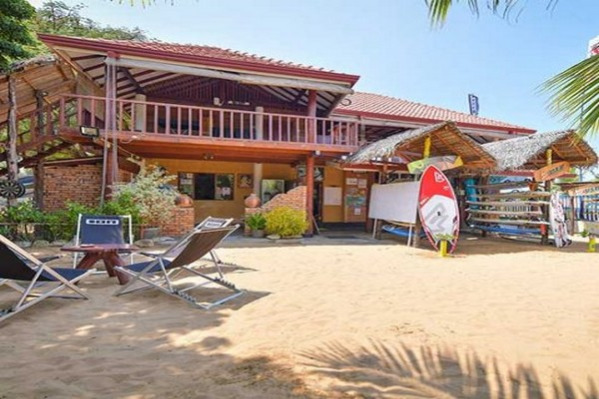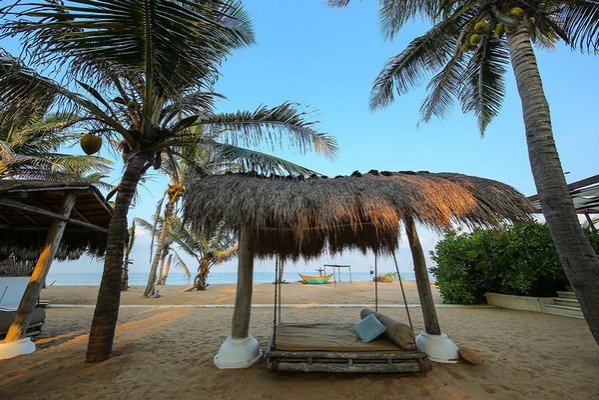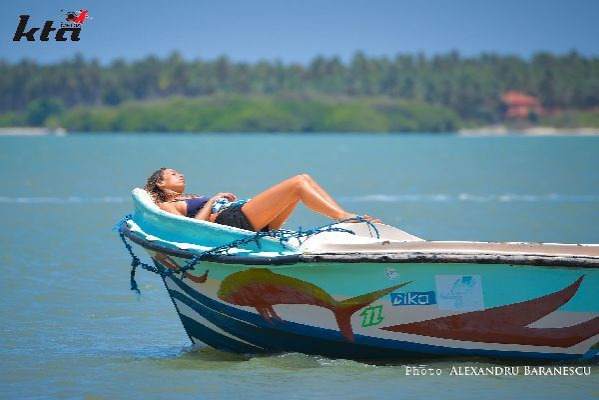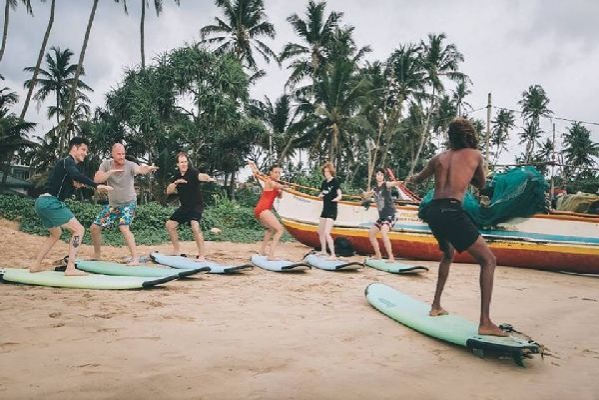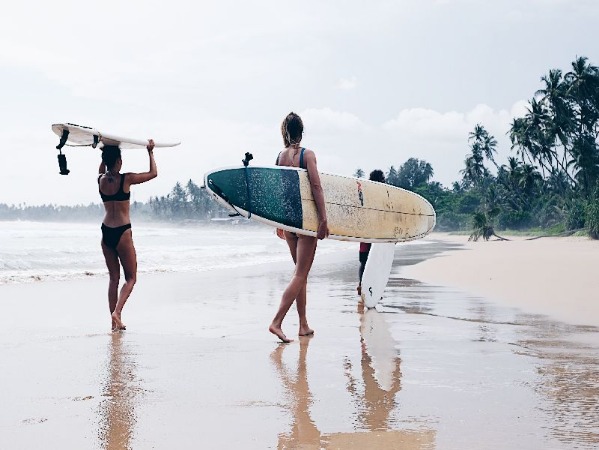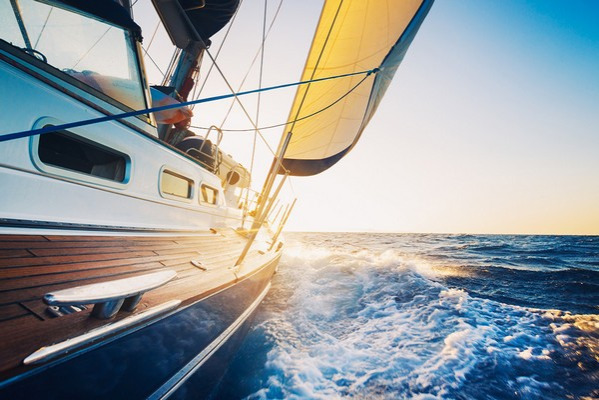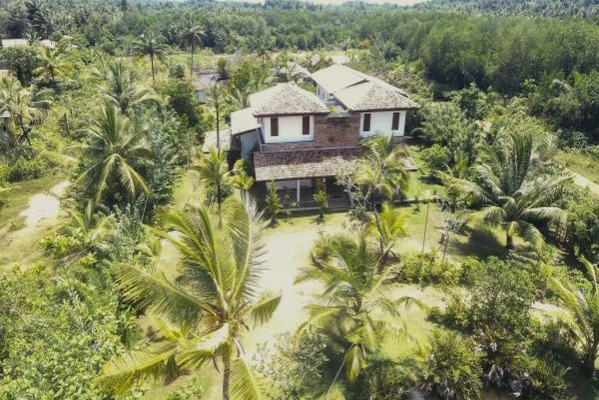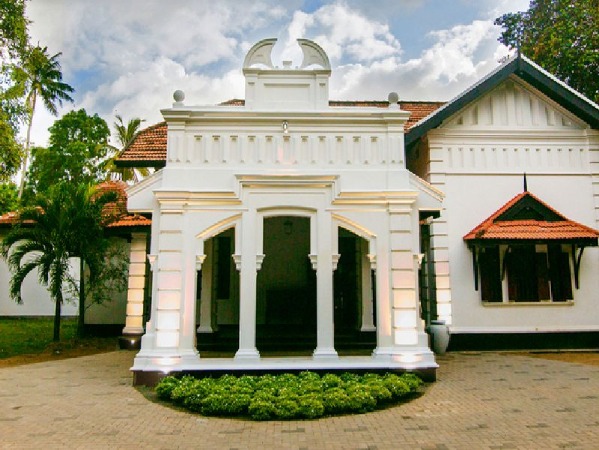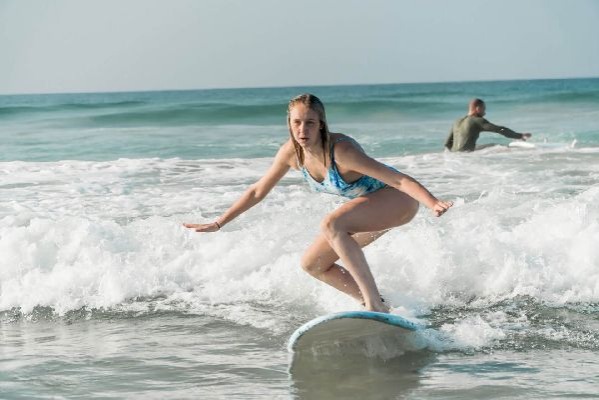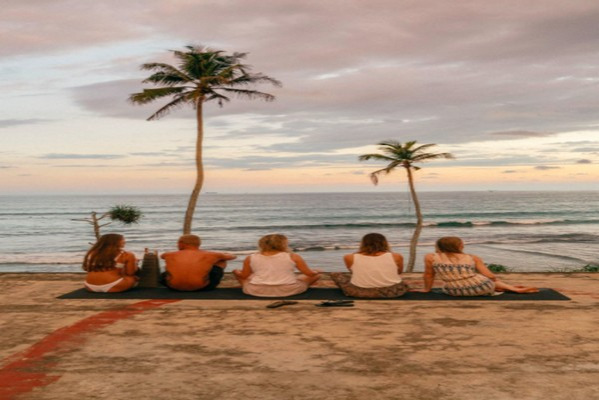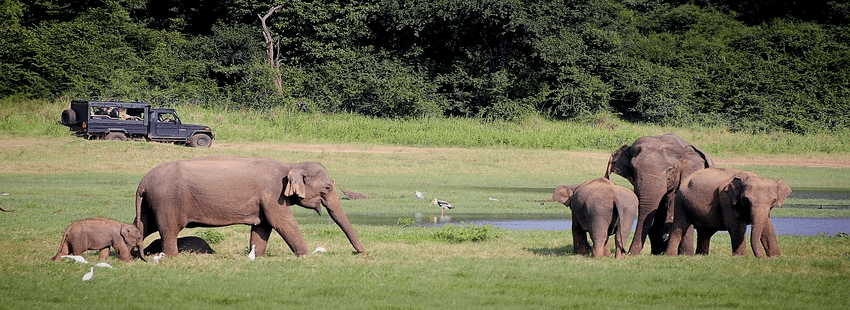
Which surf camp in Sri Lanka? Everything you need to know!
On this page you will find the following content:
1. Surfing in Sri Lanka
2. How to get there
3. Is Sri Lanka a surf spot for all surfers?
4. Is Sri Lanka a year-round destination for surfers?
5. What are the prices in Sri Lanka?
6. What is the climate like in Sri Lanka?
7. Tips for surfers
8. Hotspots for surfing
9. Is it dangerous in Sri Lanka?
10. The food in Sri Lanka
11. Decision-making guide
1. Surfing in Sri Lanka
Looking for a surfing adventure in bathtub-warm water? Then you should read on here, because Sri Lanka is a dream! Palm trees, stunning beaches, local markets, temples on every corner, colourful birds, spicy food and waves that make surfers' hearts beat faster are waiting for you! The island nation south of India has an incredibly diverse landscape. Besides beaches, you will encounter rainforests, highlands and dry regions. Thus, the island nation in the Indian Ocean promises a huge animal and plant world that can be explored extensively. Have you ever heard of the traditional healing art of Ayurveda? The millennia-old cultural heritage also attracts numerous tourists every year.On the map below you can get an overview of the surf camps in Sri Lanka. This way you can quickly and easily find the region or camp where you would like to go. If you have any questions, please do not hesitate to contact us.
Here you will find a list of all surfcamps in Sri Lanka (search with filter)Here you can enquire all surfcamps in Sri Lanka without obligation
2. How to get there
Unlike many other popular overseas surfing destinations, Sri Lanka is relatively easy to reach. With a direct flight time of only ten hours, you can get to the capital Colombo. There are also many flight options with short stopovers which also only extend the flight time to about thirteen hours. From the airport in Sri Lanka, the east and south coasts can be reached at low prices by train. The special thing about a train ride in Sri Lanka is that the doors remain open. So you can feel the wind fluttering through your hair while you enjoy a fantastic view. You can also book a driver or take the bus, although with the latter it could literally get crowded.At the destinations, you have various options for getting around. On the one hand, there are the so-called tuk tuks. The three-wheeled vehicle, also called an auto rickshaw, lets you feel the local lifestyle, protects you from rain and you can also safely stow luggage in it. You also have the option of renting a scooter.
3. Is Sri Lanka a surf spot for all surfers?
In fact, Sri Lanka promises a wave for every surfer's heart. However, beginners and annual holiday surfers are strongly advised to surf only under supervision and guidance. This is because the surf spots are often rather crowded and as a result, accidents can quickly occur due to disregard for rules and lack of technique. Practising with a surf camp or guide is therefore strictly recommended. For advanced surfers, it is easier to go surfing independently, but there are also many surf camps for this group where they can share and expand their surfing skills.4. Is Sri Lanka a year-round destination for surfers?
Yes, Sri Lanka is a year-round destination due to the different climate zones. The island has two rainy seasons, the southwest monsoon ("Yala") and the northeast monsoon ("Maha"). The advantageous thing is that the monsoon periods are regionally and temporally limited as well as opposite. With the aim of not getting wet, the best time to surf is from November to April on the south coast. From May to October, surfing is then the order of the day on the east coast. Thus, unlike most surf destinations, Sri Lanka has two main seasons. As a result, it is usually quite filled with surfers and travellers with other travel motives throughout the year. The months of April and October are considered the alternate months, as that is when the monsoon periods change. So if you are looking for a slightly more tourist-free time, you can consider these two months. But travelling to a current monsoon area does not only have soggy disadvantages: Deserted beaches and yet intense sunshine after morning rain showers speak for themselves. In any case, it is advisable to pack a rain jacket to be prepared for a possible trip through the whole of Sri Lanka.Most popular surf camps in the North West Province
Most popular surf camps in the Southern Province
5. What is the climate like in Sri Lanka?
From November to April is the dry season on the west coast, south coast and in the hill country. At the same time, it is the rainy season on the east coast. Exactly the opposite is the case from May to October, i.e. dry season on the east coast and rainy on the south coast. In the transition period between the monsoon periods, Sri Lanka is quite humid and cloudy. The tropical temperatures in Sri Lanka are high and not very changeable. In general, it is slightly warmer in the northeast and lowlands than in the southwest and highlands. On average, the island has 30 degrees during the day and 20 degrees at night. The incredibly warm water temperature is always between 27-28 degrees.
6. What are the prices in Sri Lanka?
Generally speaking, Sri Lanka is an inexpensive destination. Depending on the area, you can stay in a chic hotel for as little as fifteen euros. Getting around and eating out are also cheap. For as little as €1.50, you can treat yourself to a delicious lunch, for example the speciality rice and curry. The prices of surf camps are rising due to the increasing popularity among surfers. However, they are still cheaper compared to European standards. As Sri Lanka is not just around the corner, it is not always possible to bring all the equipment from home. There are enough solutions for this case in Sri Lanka. Since the sixties, Sri Lanka has experienced a constant surfing boom. As a result, the surfing infrastructure has been expanded not only with camps and schools, but also with numerous shops. Some of the best are Ceylon Sliders (in Weligama), Dylan's Surfshop (n Arugam Bay), Kooks Shop (in Mirissa), Lazy Ride (in Mirissa) and The Box (in Madiha). So there's no problem either renting or even buying equipment.
7. Tips for surfers
As the water temperature is very pleasant all year round, it is sufficient to pack light surfwear. A surf bikini or board shorts should suffice. But for better protection from the sun and to save on sunscreen, a thin, long surf suit can also be an advantage.
It is also good to know that there are numerous surfing competitions in Sri Lanka. Especially in Arugam Bay, these take place on a national level. But even for non-professionals, there are many smaller competitions that even beginners can take part in.
8. Surfing hotspots
There are countless hotspots in Sri Lanka. Below we list a few from the towns of Hikkaduwa, Unawatuna Bay, Weligama and Argum Bay.
The best surf spots in Hikkaduwa
On the southwest coast of the island, about 120 km south of Colombo, lies the famous party town of Hikkaduwa. It used to be just a surfing village. Today it is popular with surfers and party-goers alike, because there is always something going on in Hikka! Not only are there countless bars and restaurants waiting for you, but divers also get their money's worth here.
- Bennys
- Main Reef
- North Jetty
- Beach Break
The best surf spots around Unawatuna
Another popular surf spot is Unawatuna Bay, which unlike Hikkaduwa is more of a family holiday destination. The swell on the beach is not always perfect. However, the locals know where good waves are and are helpful.
- Unawatuna Beach Break
- Dalawella-Riff
- Bonavista Bay
- Kabalana Beach Break
- South Beach
Surf camps in Hikkaduwa and Unawatuna
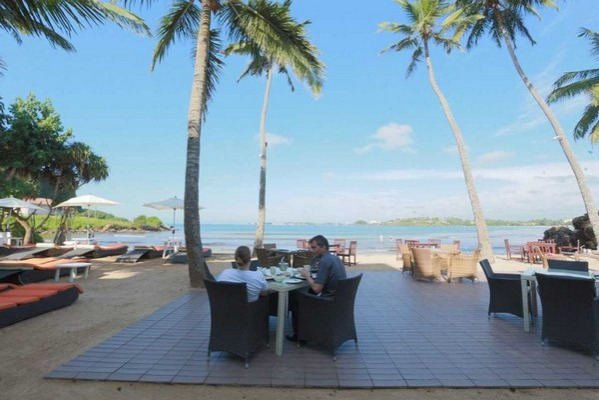
- Coco Bay Unawatuna (Unawatuna, Sri Lanka) 


No:10/4, Roomassala Road, Roomassala, Unawatuna Beach, Unawatuna, -, Galle, Sri Lanka
Quick Info Read more
The best surf spots in Weligama
Weligama offers good waves all year round and is another favourite for beginners and advanced surfers. The beach at Weligama stretches over 2 km and beginners are offered the perfect conditions here due to plenty of space. The waves generally break gently here.
- Weligama Beach Break
- Midigama
- Gurubebila
- Mirissa Bay
Most popular camps in Weligama
The best surf spots in Ahangama
Ahangama is especially suitable for advanced and professional surfers. Perfect A-frame waves await you here.
- South Beach
- Devil’s Island
- Kabalana
- Madiha
Most popular camps in Ahangama
9. Is it dangerous in Sri Lanka?
You might be wondering how safe it is in Sri Lanka. It is by no means a high-risk area and with the following tips and safety precautions, your trip to Sri Lanka will be a wonderful and worry-free experience. If you are travelling to Sri Lanka, vaccination against hepatitis A is definitely recommended. If you plan to stay on the island for a longer period of time, vaccinations against hepatitis B, typhoid, rabies and Japanese encephalitis are recommended. These protect you against stomach and intestinal infections, among other things. Furthermore, you should avoid drinking tap water and consuming raw food. Another thing you should be aware of is dengue fever, which is transmitted by the bite of infected mosquitoes. Unfortunately, you cannot be vaccinated against this disease, so you should use mosquito repellent containing DEET. You can also minimise the risk of infection by using mosquito nets and insecticide in your accommodation. Your accommodation should also be air-conditioned, as mosquitoes shy away from the cold.
10. The food in Sri Lanka
In Sri Lanka, an incredible number of influences merge when it comes to food. Sinhalese cuisine is characterised by the intensive use of many and hot spices. Indian, Arabic, Malaysian, Portuguese, English and Dutch food culture meet here. Incidentally, the hot spices also kill bacteria, which is why Sinhalese food can prevent gastrointestinal problems. But Tamil cuisine also speaks for itself. Here, the Indian influences are even more pronounced. The decisive factor is again the use of interesting spices. Muslim cuisine on the east coast enjoys influences from Arabia. Delicious desserts are among the main specialities. Some of the typical aromatic dishes are lamprai (rice in a banana leaf), roti (wheat flour pancake), kotthu (chopped bread) and dosa (pancake). Another national dish is of course the famous rice and curry. Characteristic of Sri Lanka is tea. For example, Ceylon tea dates back to British colonial times.
11. Decision-making guide
With all the choice, it is sometimes not so easy to decide what is the perfect surf camp for one's individual preferences. There are many decision criteria such as the best time of year, the preferred surf hotspots and finally - what the surf camp has to offer. We work with about 26 surf camps in Sri Lanka. You are welcome to take a closer look at them on our website. If you already like one of them, we will help you to enquire about it (individual enquiry). If you don't have one in mind yet: Never mind. The huge selection doesn't make it any easier. We will be happy to advise you on enquiries and bookings, find suitable surf camps for you with the surf camp finder or start a collective enquiry.



